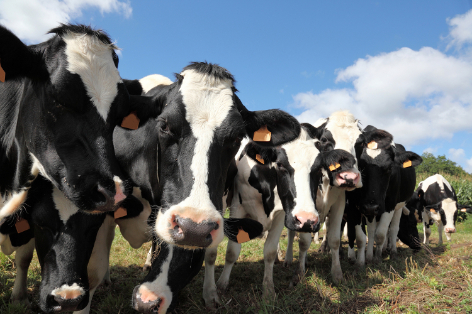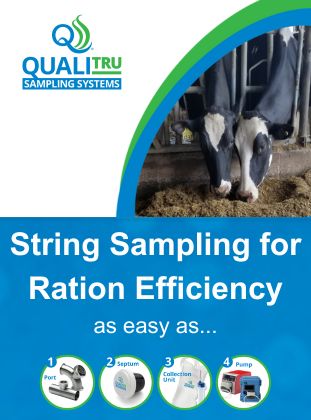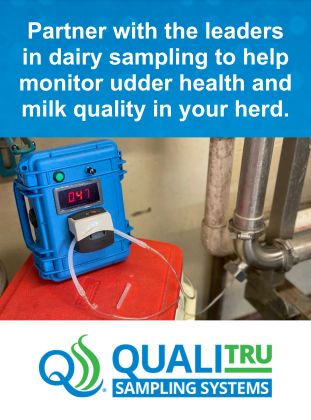Euthanizing Decisions: Never an Easy Call.

By Jaclyn Krymowski.
There’s no doubt that dairy farmers place an immense amount of pride into their operations and livestock, working around the clock to ensure both quality care and optimal management.
Hands down, one of the least glorious parts of this job is making the tough decision to euthanize a cow or calf due to failing health or unexpected injury. Unlike voluntary culling due to decreased production or poor reproductive performance, euthanizing is not always a straightforward decision, making it easy to second guess or unnecessarily delay.
The meaning of euthanasia is “good death”. It can be accomplished in different ways, but the goal is to procure a swift, clean death with as little suffering as possible.
According to official guidelines from the American Veterinary Medicine Association, euthanasia techniques fall into four categories: Acceptable (considered to reliably meet the requirements of euthanasia), Acceptable with Conditions (considered to reliably meet the requirements of euthanasia when specified conditions are met), Adjunctive (method of assuring death that may be used after an animal has been made unconscious) and Unacceptable (method that does not meet the requirements of euthanasia).
Clearly, there are right and wrong ways to go about this unpleasant task. In the heat of the moment, it can be stressful and uncertain. That’s why advanced preparation and designated protocols that can be done by trained employees and supervisors is the best way to ensure an animal’s life is ended as humanely as possible.
Why Euthanize?
At its core, euthanasia is all about putting an animal down with the intention to relieve unnecessary pain and suffering, usually done in the face of a poor prognosis such as no signs of improvement or inability to recover. The goal is to end the animal’s pain without causing additional stress by poor implementation.
What brings about the decision to ultimately euthanize varies from farm to farm. Whatever the metrics may be for one particular operation, protocols and procedures should be reviewed with the herd vet along with proper training for all involved and a regular review to make updates as necessary.
For cattle, there are only three euthanasia methods approved by AVMA and include IV injection of a pentobarbital (a drug that a veterinarian must administer), gunshot or captive bolt.
All of these methods require proper training to ensure safety of people and animals involved. Misapplying them can lead to further distress of the animal, injury to workers or an inhumane final death.
Not only is it important to have key team members trained to euthanize (both planned in advance and during emergency situations), but they must also know when it is the right time to make the decision. You or your manager may not always be available to make the final call, especially in an emergency or when an animal is under extreme duress. Having multiple people with the trust and training to make the right call in these cases is invaluable.
Common Situations
The finality and weight of the decision might lead some to wait too long and cause an animal undue suffering. Likewise, doing it too early can have an economic impact and be unnecessary.
Sick animals who are not recovering are probably among the first scenarios that come to mind, but the details of the situation vary wildly. Some examples include:
A down fresh cow who, even after being offered treatment, shows no signs of recovery.
A calf who, after rigorous antibiotic treatment, is not recovering and in severe respiratory distress.
A cow that is having a hard time calving because of the position or size of the calf. The latter situation would preferably be made only after veterinary intervention, but there is always the possibility that a vet might not be able to make it to your farm and,even after your best efforts for assistance, there is no progress.
Animals who slip and sustain injuries rendering them immobile during transportation or activities like milking.
There are likely dozens of other situations on the farm when ethanasia may need to be implemented, but each scenario will need to be reviewed and decisions made according to the case. This may require fast thinking in some cases, so your veterinarian can help you distinguish what metrics there might be to make the final decision giving confidence to both you and your employees.
Making the Call
Euthanasia should always be a last resort. This is especially true for farms that are audited under various welfare and quality programs. Fortunately, this is the goal of most farms anyway.
Having an organized herd health program and go-to protocols to treat various injuries and illnesses is a very effective way to ensure that an animal has received all viable treatment options before making the final decision. This also eliminates confusion among your team as to what treatments to utilize for specific issues and how long to anticipate the recovery process.
It should be noted that it isn’t practical to expect everyone who handles cattle to be able to treat, assess, and make decisions regarding health and welfare, especially when it comes to putting them down. In your health plan, be sure to clearly identify who has the trust and training to delegate, oversee, and finalize all health-related issues. Have these people clearly identified and keep their contact information accessible to all employees at all times.
Be sure that tools for euthanasia are also made readily available and easy to find in the event of an emergency. Clearly document euthanasia events so they can be reviewed by your veterinarian so you can benchmark and monitor performance.
If you have cattle, it is inevitable that you will eventually face situations that cannot be amended. You owe it to the animal to bring about as peaceful an end as possible.
The task isn’t one that anyone really wants to do, but is an absolutely necessary skill and knowledge that serves its purpose in your overall herd health program.



